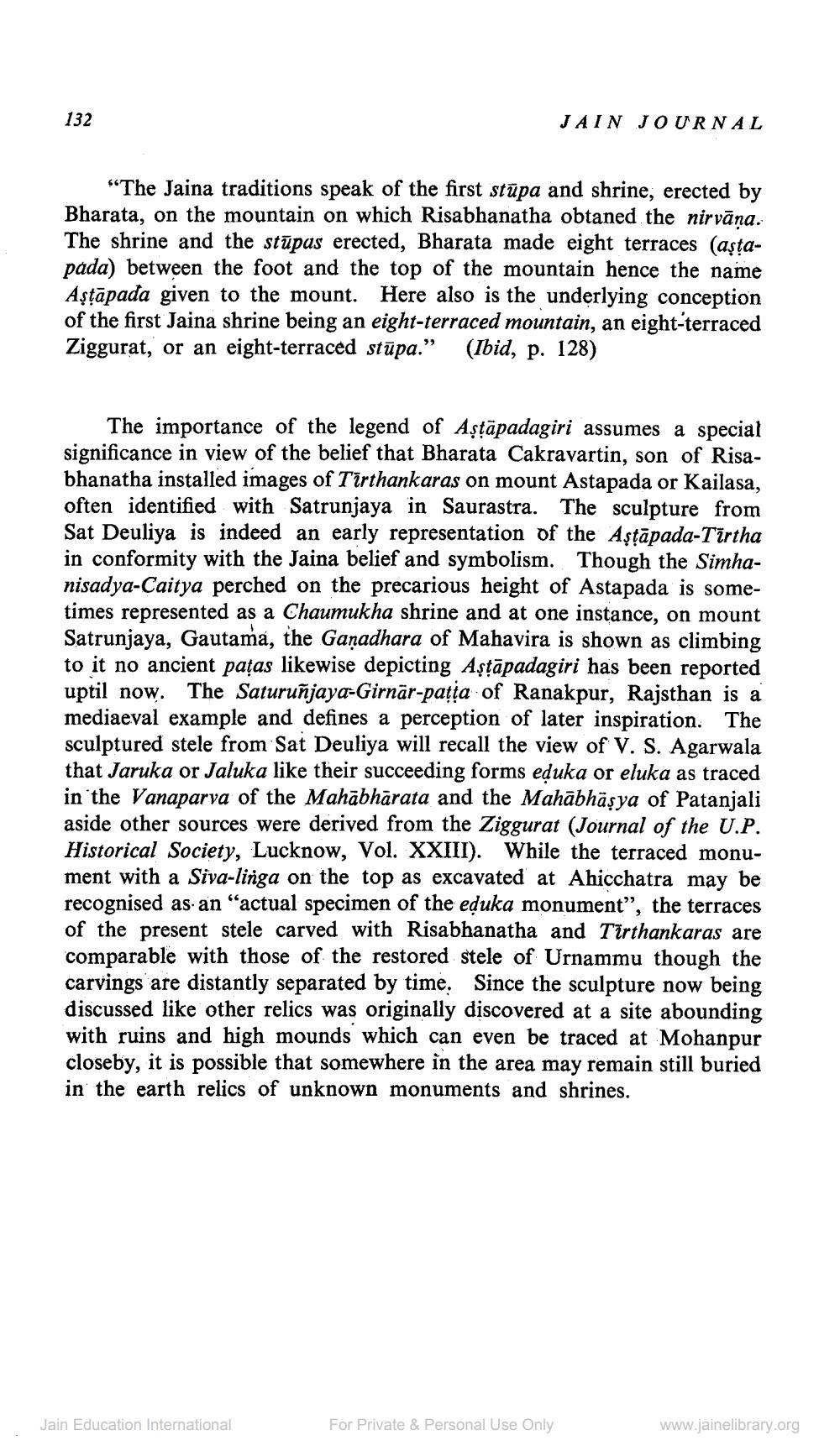________________
132
"The Jaina traditions speak of the first stupa and shrine, erected by Bharata, on the mountain on which Risabhanatha obtaned the nirvāṇa. The shrine and the stupas erected, Bharata made eight terraces (aştapada) between the foot and the top of the mountain hence the name Aşṭāpada given to the mount. Here also is the underlying conception of the first Jaina shrine being an eight-terraced mountain, an eight-terraced Ziggurat, or an eight-terraced stupa." (Ibid, p. 128)
JAIN JOURNAL
The importance of the legend of Aşṭäpadagiri assumes a special significance in view of the belief that Bharata Cakravartin, son of Risabhanatha installed images of Tirthankaras on mount Astapada or Kailasa, often identified with Satrunjaya in Saurastra. The sculpture from Sat Deuliya is indeed an early representation of the Aşṭapada-Tirtha in conformity with the Jaina belief and symbolism. Though the Simhanisadya-Caitya perched on the precarious height of Astapada is sometimes represented as a Chaumukha shrine and at one instance, on mount Satrunjaya, Gautama, the Gaṇadhara of Mahavira is shown as climbing to it no ancient patas likewise depicting Aṣṭāpadagiri has been reported uptil now. The Saturuñjaya-Girnär-paṭṭa of Ranakpur, Rajsthan is a mediaeval example and defines a perception of later inspiration. The sculptured stele from Sat Deuliya will recall the view of V. S. Agarwala that Jaruka or Jaluka like their succeeding forms eḍuka or eluka as traced in the Vanaparva of the Mahabharata and the Mahabhäṣya of Patanjali aside other sources were derived from the Ziggurat (Journal of the U.P. Historical Society, Lucknow, Vol. XXIII). While the terraced monument with a Siva-linga on the top as excavated at Ahicchatra may be recognised as an "actual specimen of the eḍuka monument", the terraces of the present stele carved with Risabhanatha and Tirthankaras are comparable with those of the restored stele of Urnammu though the carvings are distantly separated by time. Since the sculpture now being discussed like other relics was originally discovered at a site abounding with ruins and high mounds which can even be traced at Mohanpur closeby, it is possible that somewhere in the area may remain still buried in the earth relics of unknown monuments and shrines.
Jain Education International
For Private & Personal Use Only
www.jainelibrary.org




